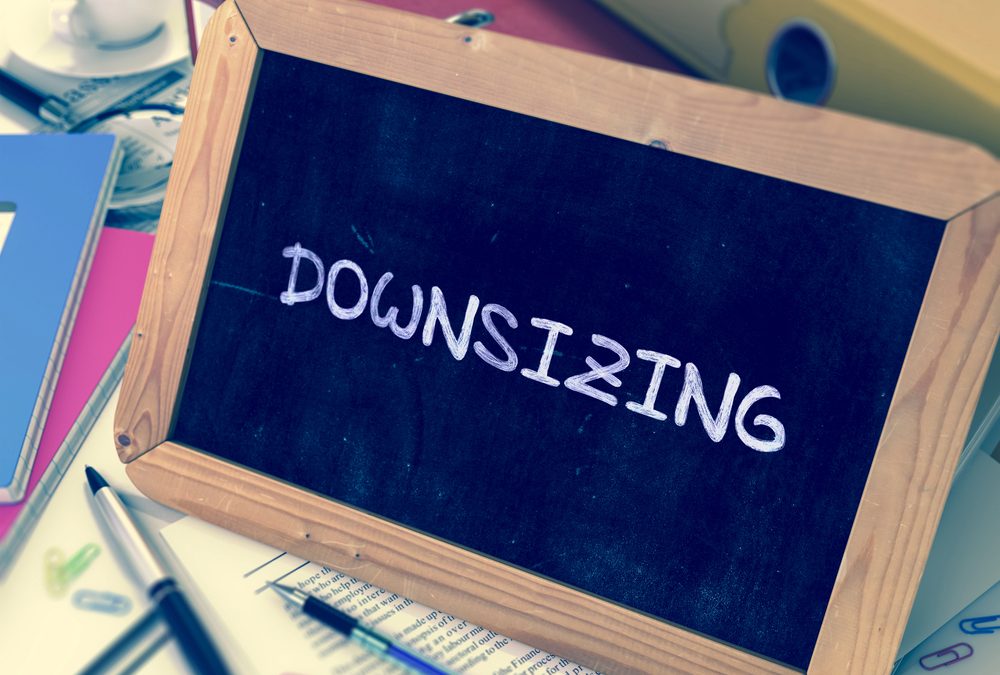 You’ve probably heard the phrase “death by a thousand (paper) cuts …” which refers to a slow, painful, demise caused by the cumulative damage of one too many ‘seemingly’ minuscule problems. In my experience as an I/O Psychologist, it’s often the tiny nicks and dents during an employees’ workday that becomes the most harmful to them. When examining a person’s decline in personal wellness and productivity while on the job it’s often the gradual buildup of annoyances and grievances in the workplace that eventually breaks down someone’s overall drive and commitment to their work.
You’ve probably heard the phrase “death by a thousand (paper) cuts …” which refers to a slow, painful, demise caused by the cumulative damage of one too many ‘seemingly’ minuscule problems. In my experience as an I/O Psychologist, it’s often the tiny nicks and dents during an employees’ workday that becomes the most harmful to them. When examining a person’s decline in personal wellness and productivity while on the job it’s often the gradual buildup of annoyances and grievances in the workplace that eventually breaks down someone’s overall drive and commitment to their work.
Many readers of this blog know that I try to address career and HR issues in fresh and nuanced ways. For example, a while back I tackled the issue of employees “Calling in Sad” rather than just calling in “sick.” In this current article, I’ll cover other reasons people may start to feel demoralized, bored, and agitated at the very notion of another day at work.
For many employees, dealing with workplace irritations has been minimized and normalized as just ‘part of the job.’ Even though certain irritants may become common and normal, it’s not always sustainable for people to deal with their official work responsibilities, while also navigating and enduring unwanted sounds, sights, and other distractions. The cognitive load can be heavy. This makes me wonder how many employees are calling or emailing work to say, “I can’t come in” because they just cannot take their work environment even though they enjoy their work?
In this sense, a place of work can actually make staff feel depleted and unwell without the spread of a single germ. It may be tempting to dismiss this as trivial and catering to pampered and delicate ‘snowflakes.’ The fact is, however, this potentially affects everyone … because those employees who are avoiding their work with increasing absences, or attend work but can barely concentrate because of these distractions, are threatening the company’s bottom line as well as the organization’s corporate reputation.
When the music stops …
 Workplace music or musak is not the only workplace environment issue that can be off-putting and discouraging people from attending work and being productive while they’re there. Many workplace configurations have unintended negative consequences. For example, this January 2019 article ‘Everyone hates open offices. Here’s why they still exist’ makes it clear that this common workplace feature grates on many peoples’ nerves. This other article points out the differential negative impact that open offices have on female employees. My open office experience is (thankfully) minimal and indirect so I wasn’t aware of this aspect until reading this article.
Workplace music or musak is not the only workplace environment issue that can be off-putting and discouraging people from attending work and being productive while they’re there. Many workplace configurations have unintended negative consequences. For example, this January 2019 article ‘Everyone hates open offices. Here’s why they still exist’ makes it clear that this common workplace feature grates on many peoples’ nerves. This other article points out the differential negative impact that open offices have on female employees. My open office experience is (thankfully) minimal and indirect so I wasn’t aware of this aspect until reading this article.
A few days ago, I was speaking with a colleague about a talk radio show that I caught the tail end of. The topic was music in the workplace and how it is literally making employees sick and tired. To be fair, these employees aren’t coughing or choking at their registers or desks. Rather, the issue is the incessant and repetitive tunes ringing in their ears for 8 hours a day, five days per week.
Sensory overload … is it part of your work?
I stopped and thought “how would I deal with hearing Celine Dion’s “My heart will go on … and on, and on” twice per hour, every day while I’m busy at work? No offence to Celine, it could easily be any other artist from Drake to Alicia Keys, because when overplayed, most music can get annoying. It can feel oppressive when we’re exposed to something that we find distasteful or unpleasant – especially if there’s no way to get away from it. How are employees expected to be productive, pleasant, and motivated? Besides the obvious annoyance factor of having repetitive music around, there are many people who’s ability to concentrate is compromised by noise (e.g., people who are neurodiverse and others who may lack a formal diagnosis but still experience negative effects due to sensory sensitivities). Sometimes, I don’t enjoy running errands during the holidays due to the monotonous barrage of holiday songs that seem to still hum inside my head hours I have left a store. I can only imagine how someone who is working for several hours without a break in that environment … might feel like they could break …
One takeaway is that organizations need to realize that being accommodating and open to employees’ suggestions about their work environment is worthwhile. A workplace that is willing to change an old habit, such as letting their employees’ choose what type of music they want to hear (or chose a music-free environment) could benefit from a major improvement in efficiency and more willingness to come to work. Organizations need to understand that what used to work in the past may not work for future generations … and those that don’t want to listen may be singing a different tune when or if their place of work stops working.
Do you need help navigating the world of work? Contact Dr. Helen today for a free and confidential initial consultation by phone, email, or via direct message on Twitter, Facebook, or LinkedIn. If something urgent comes up, I’m also available by a voice or video on Magnifi, an expertise-on-demand app.
Have you ever wished you could get inside the head of a hiring manager? You can. Dr. Helen Ofosu is a Career Coach/Counsellor with a difference. She has worked for organizations to create hiring and screening tools. She’s created countless pre-screening tests, interviews, simulations, and role plays for organizations of all kinds.
Dr. Helen’s training in Industrial and Organizational (I/O) Psychology means she is a genuine expert in evaluating work-related behaviours. She uses those skills to help hiring managers tell the difference between people who say the right things during interviews and people who actually deliver on the job. In other words, Dr. Helen understands first-hand how job candidates are assessed.
More than career coaching, it’s career psychology®.
I/O Advisory Services – Building Resilient Careers and Organizations.
Please share this article using any of the social media icons below.





